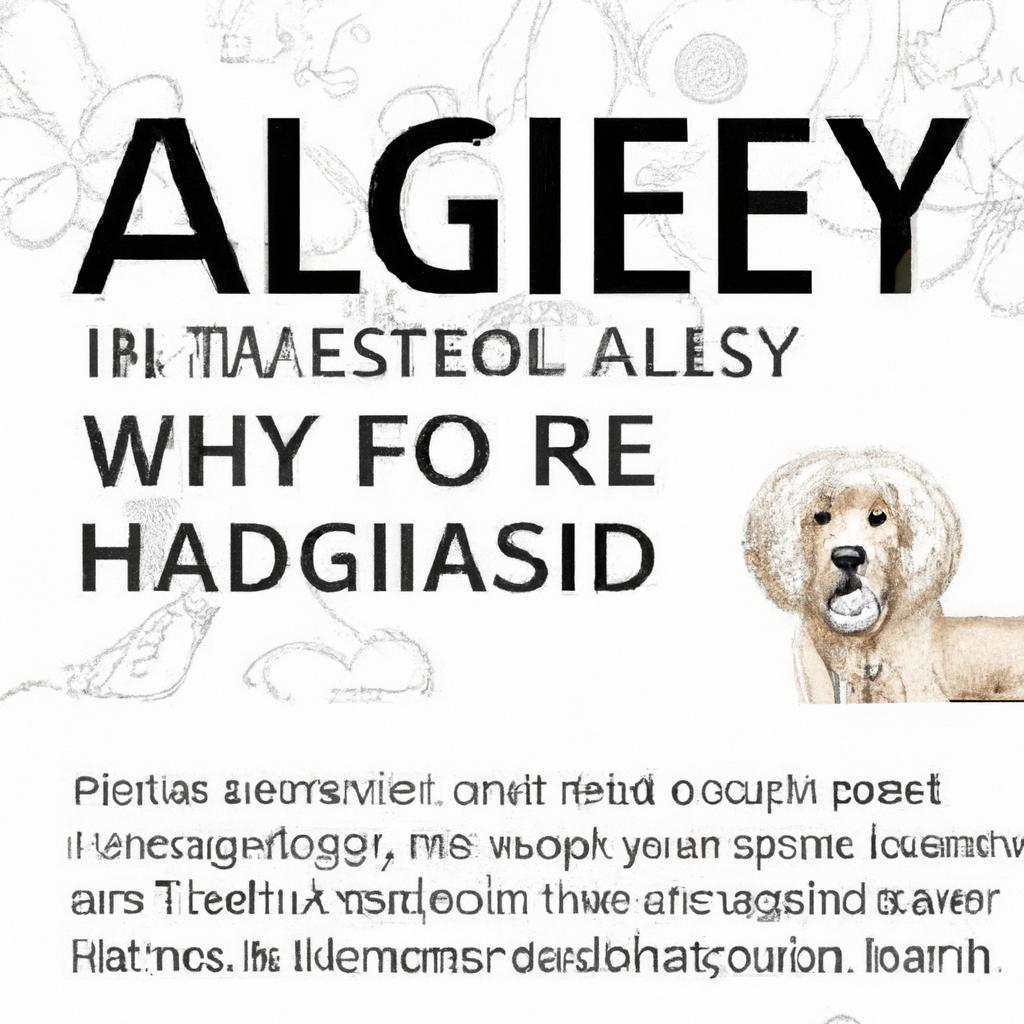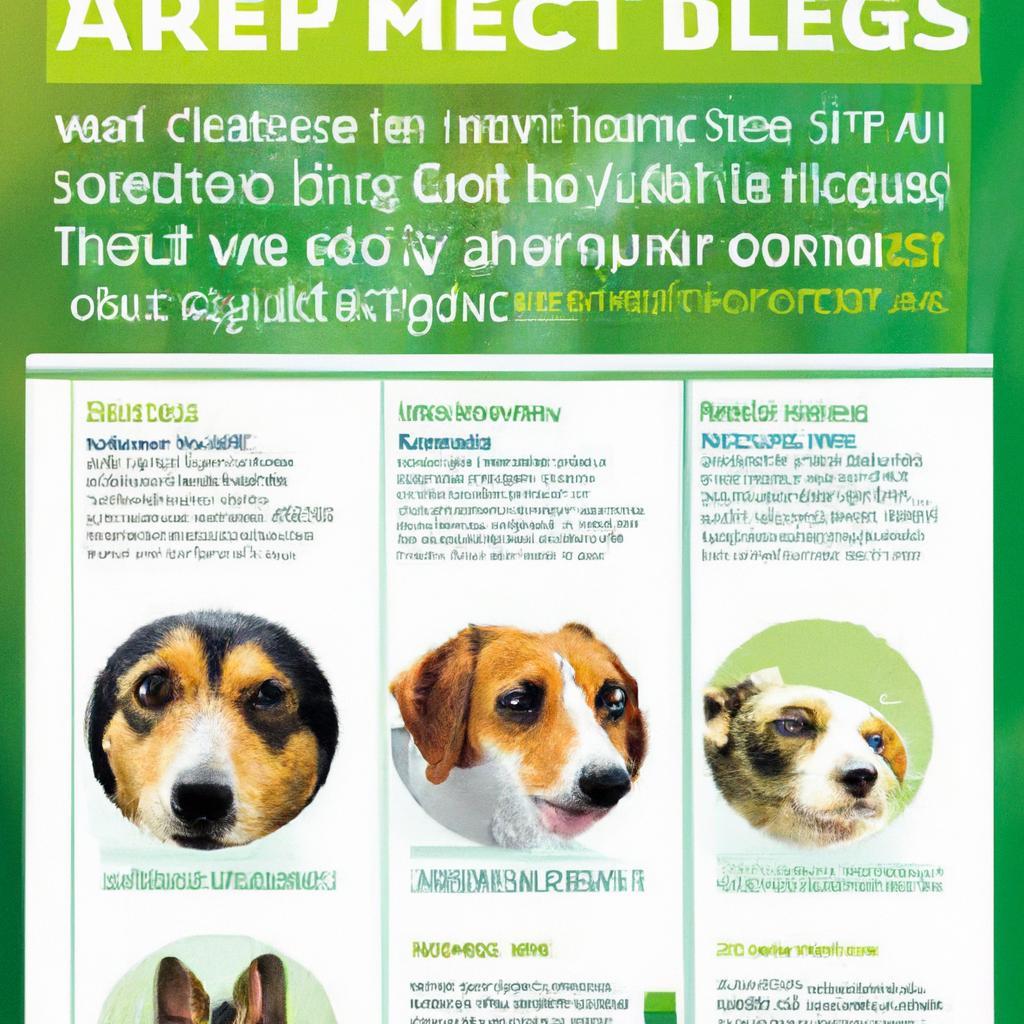Imagine a family eagerly preparing to welcome a new furry friend into their home. They dream of playful afternoons and cozy evenings, but one member has allergies. Enter the hypoallergenic dog—a breed designed to minimize allergens. These dogs produce fewer proteins that trigger allergic reactions, allowing families to enjoy companionship without the sneezes. Choosing a hypoallergenic dog means embracing love and loyalty without compromising health. It’s not just about having a pet; it’s about creating a harmonious home for everyone.
Contents
- Understanding Hypoallergenic Dogs and Their Unique Traits
- The Science Behind Hypoallergenic Breeds and Allergens
- Choosing the Right Hypoallergenic Dog for Your Lifestyle
- Caring for Hypoallergenic Dogs: Tips for Allergy Management
- Q&A
Understanding Hypoallergenic Dogs and Their Unique Traits
When exploring the world of canine companions, the term “hypoallergenic” often surfaces, sparking curiosity among potential dog owners. Hypoallergenic dogs are breeds that are less likely to trigger allergic reactions in sensitive individuals. This characteristic is primarily due to their unique coat types and grooming needs, which can significantly reduce the amount of dander, saliva, and urine that typically provoke allergies. Understanding these traits can help you make an informed decision when selecting a furry friend.
One of the most notable features of hypoallergenic breeds is their **low-shedding** coats. Unlike traditional dogs that shed fur and dander regularly, hypoallergenic dogs often have hair that is more similar to human hair, which means it falls out less frequently. This trait not only minimizes allergens in the home but also makes grooming a more manageable task. Regular grooming sessions can help maintain their coats and further reduce the presence of allergens, making them an excellent choice for allergy sufferers.
Additionally, many hypoallergenic breeds possess a **unique skin structure** that contributes to their hypoallergenic status. These dogs often produce less dander, which is a common trigger for allergies. Breeds such as Poodles, Bichon Frises, and Maltese are known for their curly or wavy coats that trap dander and hair, preventing it from becoming airborne. This natural barrier can create a more comfortable living environment for those with allergies, allowing them to enjoy the companionship of a dog without the constant worry of allergic reactions.
It’s also essential to recognize that no dog is entirely free of allergens; however, hypoallergenic breeds can significantly reduce the likelihood of allergic responses. Factors such as **individual sensitivity** and the specific breed’s characteristics play a crucial role in determining how well a person may tolerate a particular dog. Therefore, spending time with a breed before making a commitment can be beneficial. By understanding the unique traits of hypoallergenic dogs, you can find a loyal companion that fits seamlessly into your lifestyle while minimizing allergy concerns.
The Science Behind Hypoallergenic Breeds and Allergens
When discussing hypoallergenic dog breeds, it’s essential to understand the science behind allergens and how they interact with our bodies. Allergens are typically proteins found in a dog’s skin, saliva, and urine. These proteins can trigger allergic reactions in sensitive individuals. Hypoallergenic breeds are often characterized by their lower production of these proteins, making them a more suitable option for allergy sufferers.
One of the key factors contributing to the hypoallergenic nature of certain breeds is their coat type. Breeds with hair instead of fur tend to shed less dander, which is a common allergen. This reduced shedding means that fewer allergens are released into the environment, leading to a cleaner living space. Some breeds, such as the Poodle and the Bichon Frise, have curly or wavy coats that trap dander and hair, preventing it from becoming airborne.
Moreover, the grooming habits of hypoallergenic breeds play a significant role in minimizing allergens. Regular grooming helps to remove loose hair and dander before it can accumulate in your home. This proactive approach not only keeps your dog looking their best but also contributes to a healthier environment for allergy sufferers. Owners of hypoallergenic breeds often report fewer allergy symptoms, thanks to these grooming practices.
It’s important to note that no dog is entirely free of allergens. However, hypoallergenic breeds can significantly reduce the likelihood of allergic reactions. By choosing a breed known for its lower allergenic potential, individuals with sensitivities can enjoy the companionship of a dog without compromising their health. Understanding the science behind these breeds empowers potential pet owners to make informed decisions that align with their lifestyle and well-being.
Choosing the Right Hypoallergenic Dog for Your Lifestyle
When considering a hypoallergenic dog, it’s essential to align your choice with your lifestyle and living situation. Different breeds have varying energy levels, grooming needs, and temperaments, which can significantly impact your daily routine. For instance, if you lead an active lifestyle, you might prefer a breed that enjoys outdoor activities and exercise, such as the **Portuguese Water Dog** or the **Schnauzer**. On the other hand, if you have a more relaxed lifestyle, breeds like the **Bichon Frise** or **Maltese** may be better suited to your home environment.
Another critical factor to consider is the size of the dog. Smaller breeds often require less space and can adapt well to apartment living, making them ideal for urban dwellers. Breeds like the **Yorkshire Terrier** or **Shih Tzu** are not only hypoallergenic but also thrive in smaller living spaces. Conversely, if you have a larger home with a yard, you might want to explore medium to large breeds, such as the **Irish Water Spaniel** or **Lagotto Romagnolo**, which can enjoy the freedom of outdoor play.
Grooming requirements are also a vital aspect of choosing the right hypoallergenic dog. Some breeds may require regular grooming to maintain their coat and minimize allergens, while others may have lower maintenance needs. For example, the **Poodle** comes in various sizes and requires regular grooming to prevent matting, while the **Basenji** has a short coat that requires minimal upkeep. Understanding the grooming needs of each breed will help you determine how much time and effort you can realistically commit.
Lastly, consider the dog’s temperament and compatibility with your family. If you have children or other pets, it’s crucial to select a breed known for its friendly and adaptable nature. Breeds like the **Cairn Terrier** and **Soft Coated Wheaten Terrier** are often great with kids and can integrate well into family life. Assessing your household dynamics and the energy levels of potential breeds will ensure a harmonious relationship between your new furry friend and your family.
Caring for Hypoallergenic Dogs: Tips for Allergy Management
Caring for hypoallergenic dogs requires a proactive approach to minimize allergens in your home and ensure a comfortable environment for both you and your pet. These breeds are often favored by allergy sufferers due to their reduced shedding and lower production of dander. However, it’s essential to understand that no dog is completely hypoallergenic; rather, they may produce fewer allergens. To effectively manage allergies, consider implementing a regular grooming routine that includes frequent baths and brushing. This helps to remove loose hair and dander before it can accumulate in your living space.
Another crucial aspect of allergy management is maintaining a clean home. Regular cleaning can significantly reduce allergen levels. Focus on the following areas:
- Vacuuming: Use a vacuum cleaner equipped with a HEPA filter to capture fine particles.
- Dusting: Wipe surfaces with damp cloths to trap dust rather than dispersing it into the air.
- Air Quality: Consider using air purifiers with HEPA filters to help remove allergens from the air.
Diet also plays a role in the overall health of your hypoallergenic dog, which can indirectly affect allergy management. A balanced diet rich in omega fatty acids can promote healthy skin and coat, reducing the amount of dander produced. Consult with your veterinarian to determine the best dietary options tailored to your dog’s specific needs. Additionally, keeping your dog hydrated and providing regular exercise can contribute to their overall well-being, further minimizing allergy triggers.
Lastly, creating designated pet-free zones in your home can provide relief for allergy sufferers. Establish areas where your dog is not allowed, such as bedrooms or specific living spaces. This separation can help reduce allergen exposure and create a safe haven for those with sensitivities. By combining grooming, cleaning, dietary considerations, and strategic space management, you can enjoy the companionship of your hypoallergenic dog while effectively managing allergies.
Q&A
-
What does hypoallergenic mean in relation to dogs?
Hypoallergenic dogs are breeds that are less likely to trigger allergic reactions in sensitive individuals. This is typically due to lower levels of allergens such as dander, saliva, and urine.
-
Are hypoallergenic dogs completely allergy-free?
No, hypoallergenic dogs are not completely allergy-free. They may produce fewer allergens, but no dog is entirely free of allergens. Individuals with allergies may still experience reactions, albeit potentially milder.
-
Which breeds are considered hypoallergenic?
Some popular hypoallergenic breeds include:
- Poodle
- Bichon Frise
- Portuguese Water Dog
- Shih Tzu
These breeds are known for their low-shedding coats and reduced dander production.
-
How can I minimize allergies if I choose a hypoallergenic dog?
To further reduce allergy symptoms, consider:
- Regular grooming and bathing of your dog
- Using air purifiers in your home
- Maintaining a clean living environment
- Consulting with an allergist for personalized advice
These steps can help create a more comfortable atmosphere for allergy sufferers.
understanding hypoallergenic dogs is essential for allergy sufferers seeking companionship. These breeds can offer a loving, low-allergen alternative, allowing you to enjoy the joys of pet ownership without compromising your health. Choose wisely!

大家好,我是彼得潘,專業的手法身體治療師。我喜歡探索和研究各種主題,並透過與人工智慧的合作分享專業、實用、有趣的文章。我們定期進行人工審核,以確保內容的準確性。如果您發現文章中有任何不準確的地方,請隨時與我們聯繫,我們會及時糾正。您可以透過 [email protected] 與我們聯繫。



